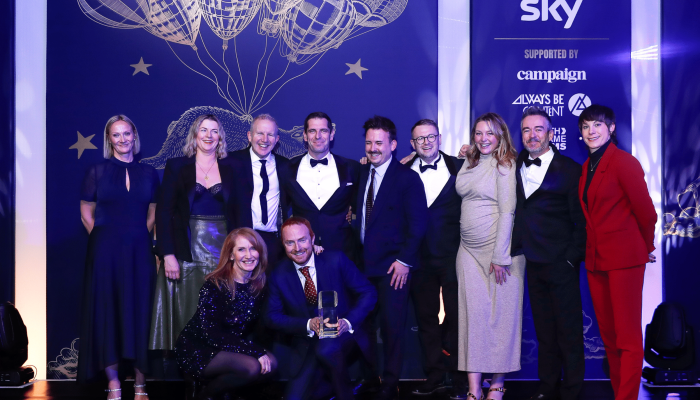CEO and ‘Head of Voices’ at Verbal Identity, Chris West, takes a look at the language of banks – the traditional and the challengers - revealing how they use language differently and how it hints at deeper, outdated beliefs.
You don’t have to be a fan of Seinfeld to appreciate language. In an episode of Season 2, everyman loser George Costanza is finally invited back to a dinner date’s apartment for coffee. So, what does he say?
"‘No, thank you, I don't want coffee. It keeps me up. Too late for me to drink coffee.’ I said this to her. People this stupid shouldn't be allowed to live."
“Coffee” isn’t just coffee. And words aren’t just words: our subconscious choice of language reveals our deepest beliefs. It’s the same for the language that CMOs sign-off every day for their brands: they can inadvertently reveal deeper – perhaps even unacceptable – brand beliefs. The trouble is, unless they’re George Costanza, customers pick up on the beliefs underlying these subtleties.
Take the banks. In December, the Guardian reported that directors of TSB were going to be docked bonuses for outdated behaviour, in this case on gender diversity targets. Are the other traditional banks as tone deaf to changes in society? Is their language holding them back? Are the new challenger banks any different?
Let’s stop first at the slug line underneath how the banks show up in a named search. Both HSBC and NatWest think that the most critical thing you can convey in that valuable real estate of two lines below their names is that these banks offer, erm, banking products.
In a world where trust in large organisations is evaporating, their language speaks of a lazy assumption of patriarchal ownership of the market.
Their language hints at beliefs that become real in their behaviour. Have you tried to pop into a Lloyd’s Bank to close an account and withdraw your money? You have to make an appointment at a time that suits them. To withdraw *your* money.
Contrast that with the language of the challenger banks.
Even an amateur linguist’s examination of their language reveals differences: the challenger banks are clearly purpose-driven.
Their language is also more direct: making it clear the benefits of banking with them, rather than just talking features.
Their language speaks to a restless energy. Shorter sentences. Monosyllabic words.
Finally, it offers social affirmation with mention of the numbers of people opening accounts with them.
And in the challengers’ cases, their language creates an identity which reveals deeper beliefs: that they’re not just talking ‘customer-centric’, they’re living it. We can open an account in minutes and things like an app which shows us *our* money isn’t an add-on, it’s a central obligation, part of a modern social contract between commercial organisation and customer.
So, what can brand owners and CMOs do to contemporise their brand language, while making sure it’s engaging and differentiating?
First, avoid nonsense like Word Clouds. The English language is too nuanced for such high-school methods to be useful.
Believe in the value of readability scores, such as Flesh-Kincaid, but know they’ll only separate the terrible from the OK: they won’t tell you whether your brand’s language is creating a distinct identity.
Most importantly, be clear that your brand’s tone of voice has to be more than four adjectives on a page – especially if those adjectives are ‘human’, ‘friendly’, ‘warm’ and ‘approachable’. A clear, differentiated brand voice – just like the voice of a strong, differentiated character such as George Costanza - operates on 3 levels.
At 10,000 ft there needs to be a sense of a world view or narrative for the brand’s voice. This is territory that the brand wants to show that it owns through its choice of language and the dominant themes in that territory. More precisely, it breaks down to the writers being able to answer 3 questions before anyone puts their fingers on the keyboard:
- What kind of world do we believe in?
- What do we stand for?
- What do we stand against?
In the traditional banks, they too often believe in a world where the banks think they know more about your money than you do; they stand for conservatism. The challenger banks’ language reveals a different narrative.
The new banks believe in a world where customers know as much about their money as the banks do; they stand for being a true partner of the customer, and they take a stand against creating inconvenience by moving more slowly than the rest of the customer’s world.
When those 3 questions are clear almost anything the writers produce will be on-brand.
At 1000 ft, the writers need to make choices about tone. To create a contemporary and engaging identity through language, the brand’s Tone of Voice values have to be more than modern, they have to be meaningful.
Take this simple test with your brand’s tonal values: if the opposites of the values would be obviously wrong (does any brand want to be ‘inhuman, hostile, cold and distant’?), then your actual values are just as obviously sensible – but ‘sensible’ doesn’t make for differentiation. Your language’s values have to come from the 10,000 ft narrative: they have to amplify your brand’s beliefs and world view.
At Ground Level, you need to specify for your writers which words and phrases you do and don’t use. This might seem trivial. At the most obvious, it means the Brand Director isn’t spending time annotating copy with the teacher’s red marker. But it’s also a way of making sure you stamp out inappropriate language. You might think that would be easy, but it’s not.
We live in an era when even our Prime Minister reaches into an effeminophobic lexicon to score a point. As the genius linguist and commentator points out in her blog, DebUK:
Boris Johnson, who specialises in the crass sexism of the public-school playground, denouncing his (male) opponents as ‘girly swots’ and ‘big girls’ blouses’.
The criticism at TSB seems harsh in the light of the time and energy being invested by TSB’s CMO, Pete Markey, to promote greater awareness of diversity issues. And his bank’s language, among the traditional bank brands, is clear and more direct, even if it comes across as avuncular and a little bit too ‘we really, really care’, rather than truly peer-to-peer.
But even when your brand’s voice sounds good for your sector, the problem is that your customers shop across sectors, buying beans as well as bank accounts, and what might appear to be acceptably modern language in one sector, can look out of date by comparison with contemporary, socially-aware language in other sectors.
When the world changes, brands need to change. And as always, the most malleable, cost-effective way of changing a brand’s identity is via its language. It not only creates a new belief in customers, the beliefs expressed by a brand soon become the de facto way of behaving for everyone inside the company.



